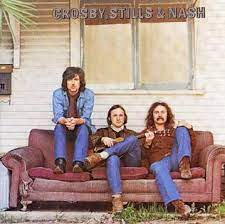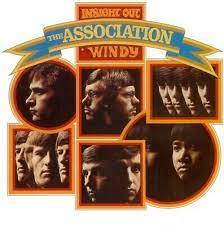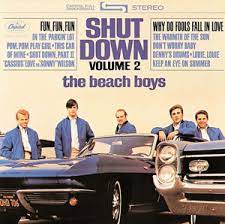Tutorial Pricing: $3.25ea OR any 10 for $10
(use code "Any10410" at checkout)
Paid Requests for $25ea
(comes with any 8 freebies -> so 9 for $25)
100's Of Free Demos & Chord Sheets
- Home
- 50s & Vegas
- Best of Buddy Holly Songs
Best Of Buddy Holly Songs
On The Acoustic
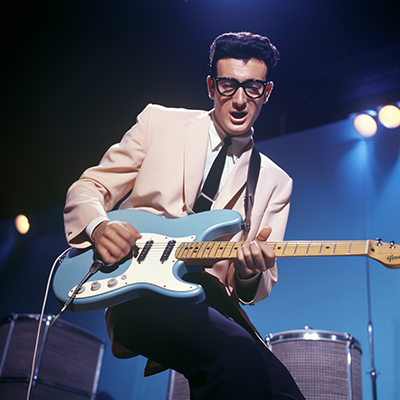
Welcome to my best of Buddy Holly songs page to assist you in playing Buddy Holly songs on acoustic guitar! Whether you're a seasoned guitarist or just starting out, my collection of video demos, chord sheets, and rhythm tips will help you master some of Buddy Holly's timeless classics.
On this page, you’ll find lessons for iconic tracks like "Blue Days Black Nights," "Fool's Paradise," and "Listen to Me." Each lesson is designed to be easy to follow, providing you with the tools to play these songs authentically. Plus, for those who want to dive deeper, I offer full lesson tutorials available for purchase. Let's get started on your journey to capturing the magic of Buddy Holly's music.
Overview Video Of Buddy Holly Songs
Blue Days Black Nights
Brown Eyed Handsome Man
Everyday
Fools Paradise
I Fought The Law
I Guess It Doesn't Matter Anymore
I'm Gonna Love You Too
Listen To Me
Maybe Baby
Oh Boy
Peggy Sue
Rave On
Reminiscing
Rockin Around With Ollie Vee
Tell Me How
Buddy Holly Most Famous Song (That'll Be The Day)
Think It Over
True Love Ways
Words Of Love
Best Of Buddy Holly Songs
Chords, Lyrics, Demos, Tutorials
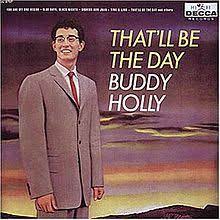
Blue Days Black Nights is a song written and originally recorded by Buddy Holly in 1956. Released as a single on Decca Records, it features Holly on lead vocals and guitar, backed by the Crickets. The track has a distinct rockabilly style, with Holly's emotive vocals expressing loneliness and heartbreak.
Though not a huge hit initially, it's now considered a classic of early rock and roll. Covered by artists like Elvis Presley and Robert Plant, the song highlights Holly's influence on the genre's development.
This one can be played in standard tuning with a root down root up down up rhythm pattern. There is lead work in this one with the chords A, E7, D, D7 and Ab.
Jump To Top
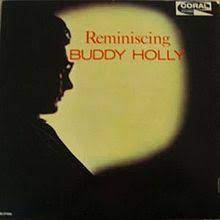
Brown Eyed Handsome Man was written by Chuck Berry in 1956 and covered by Buddy Holly in 1957. Holly's version, featured on his album "Reminiscing" in 1963, has his trademark rock and roll style with lively vocals and guitar.
The song celebrates a charming man's good looks and popularity. Though it peaked at #3 in the UK, it's still loved in Holly's music. His rendition highlights his talent and helped establish him in rock and roll.
I play this one in standard tuning with a steady down up down up rhythm pattern with the chords E, A, B7 and D. There is some lead work here.
Jump To Top Of Best Of Buddy Holly Songs
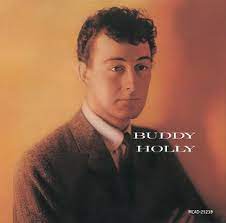
Everyday is more than just a song; it's a musical time capsule from the late 1950s. Written by Buddy Holly and Norman Petty, this gem first saw the light on his 1957 debut album, "The 'Chirping' Crickets." It's worth noting that this album was also the last one released during Holly's lifetime.
The song itself was recorded in 1957 at Norman Petty's studio in Clovis, New Mexico. Interestingly, the studio's unorthodox design led to a unique sound, giving "Everyday" its distinctive and soothing quality. The song was released on the B-side of Peggy Sue.
I play this in standard tuning with a root up down up pause up down up and repeat rhythm pattern and a little bit of picking required. The chords you'll need here are G, Em, Am7, D7, C, D, F, A# and D#.
Chords & Lyrics
Jump To Top
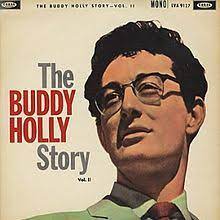
Fool's Paradise is a song written in 1955 by Norman Perry, Joan Whitney, and Alex Kramer, and Buddy Holly made it popular with his 1958 recording.
In Holly's version, his lively rock and roll style shines through with upbeat guitar and vocals. The lyrics tell of a relationship on the brink of trouble, though the singer remains unaware. Despite only reaching #90 on the US Billboard Hot 100, it's still cherished among Holly's songs.
\Recorded in Clovis, New Mexico, in 1958, it stands as one of Holly's last works before his tragic death in a plane crash. This recording showcases his talents as both a singer and guitarist.
I play this with Drop D Tuning and a capo on the 3rd fret using a steady down down down down rhythm with some rock n roll riffs. The chord here are D, G, A, E and Db7.
Lesson No Longer Available
Jump To Top Of Best Of Buddy Holly Songs
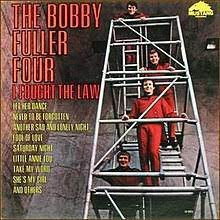
I Fought The Law wasn't a song by Buddy Holly; instead, it was written by Sonny Curtis, a member of Holly's band The Crickets. The Bobby Fuller Four made it famous with their 1965 recording.
The song is an upbeat rock and roll tune about breaking the law and facing the consequences, with catchy, rebellious lyrics like "I fought the law and the law won." Although Holly never recorded it, he helped Curtis finish the song and offered advice on its style.
The Bobby Fuller Four's version reached #9 on the US Billboard Hot 100 chart and has remained popular with many covers and references in pop culture, including a version by The Clash in 1979.
I also play this one with Drop D Tuning with the chords D, G, A and D7. There is some picking blended into the rhythm while playing a steady shuffle with some chops.
Jump To Top
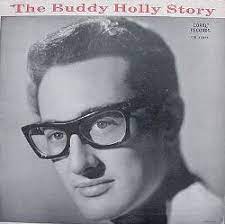
I Guess It Doesn't Matter Anymore was written by Canadian artist Paul Anka for Buddy Holly and recorded by Holly in 1958. The song has a pop sound with strings, which was unusual for rock and roll at the time.
It's about moving on from a failed relationship, with Holly's energetic vocals adding urgency. Despite being released just before Holly's tragic death, it became a hit, reaching #13 on the US Billboard Hot 100 chart.
Recorded in New York City with session musicians called "The Crickets," the song's string arrangement was done by Don Costa. It's one of Holly's most enduring songs, covered by many artists. Paul Anka donated his royalties from the song to Holly's wife as a gesture of respect.
Play this one in standard tuning using a root down up down up down up & repeat rhythm pattern with some riffs. Some picking required playing the chords G, D, D7, Em and A7.
Chords & Lyrics
Jump To Top Of Best Of Buddy Holly Songs
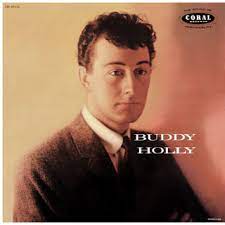
I'm Gonna Love You Too is a song that can be found on Buddy Holly's second studio album "Buddy Holly" which was released in 1958.
The song was written by Buddy Holly, Norman Petty, and Joe B. Mauldin and reached number 30 on the US Billboard Hot 100 chart in 1958.
The tune is about the joy of falling in love and wanting to express that love to someone special.
There was no official music video created for this song, as music videos were not yet a common practice during the time it was released.
This is a great song for helping you mastering Buddy Holly's music on guitar because of the steady up and down rhythm found in many of his tunes.
For rhythm here play a down up down up pattern and repeat in standard tuning with the chords A, D, E, and E7. No lead work in this one.
Chords & Lyrics
Jump To Top
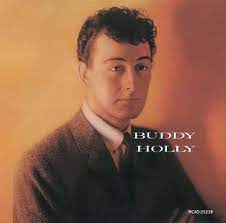
Listen to Me is a song by Buddy Holly released in 1958. It showcases Holly's distinctive voice and was recorded shortly before his tragic death.
The song was recorded in New York City with Holly's band, The Crickets. It has a simple arrangement with guitar, drums, and bass. Released as a single with "I'm Gonna Love You Too," it reached #30 on the Billboard Hot 100 and #7 on the UK Singles Chart.
The lyrics express Holly's plea for his lover's attention, and its catchy melody and upbeat tempo made it a hit. "Listen to Me" remains a classic example of Buddy Holly's style and is popular among guitar players.
For rhythm here play a root down up down down root down up down down pattern in standard tuning. There is some lead in the rhythm play the A, D and E chords
Chords & Lyrics
Jump To Top Of Best Of Buddy Holly Songs
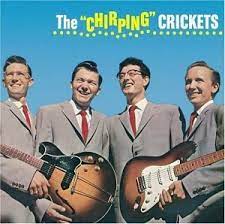
Maybe Baby is a song co-written by Buddy Holly and Norman Petty, recorded by Buddy Holly and the Crickets in 1957 for their album "The Chirping Crickets."
Recorded in Clovis, New Mexico, the track features Holly on vocals and guitar, along with the Crickets. Notable for its use of handclaps, the song was released as a single in 1958, reaching #17 on the Billboard Hot 100 and #4 on the UK Singles Chart.
The lyrics express a plea for love, with an upbeat tempo and catchy melody that made it a classic rock and roll hit. "Maybe Baby" remains popular among fans and is a great choice for acoustic guitar covers of Buddy Holly songs.
Another one in standard tuning and no lead while playing either a root down up down up root up down up (or) root down up root up down up rhythm pattern. The chords are A, Gbm, D, E and A7.
Chords & Lyrics
Jump To Top
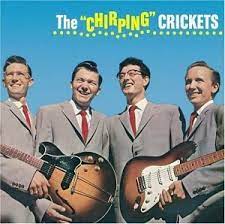
Oh Boy was recorded by Buddy Holly and the Crickets in 1957. Written by Sonny West, Bill Tilghman, and Norman Petty, it showcases Holly's vocals and the Crickets' rock and roll style.
Recorded in Clovis, New Mexico, during the same session as "Not Fade Away," the track features Holly on vocals and guitar, along with the Crickets. Released as a single in 1958, it reached #10 on the Billboard Hot 100 and #3 on the UK Singles Chart.
The lyrics express excitement about being with a lover, with a catchy melody and upbeat tempo that made it a hit. "Oh Boy" is a classic example of Buddy Holly's early rock and roll sound, loved by fans of the genre.
I play this one in Drop D Tuning and a capo 2nd fret with a steady down up stop up down up stop up rhythm pattern. A little picking required with the chords G, C, D and C7.
Jump To Top Of Best Of Buddy Holly Songs
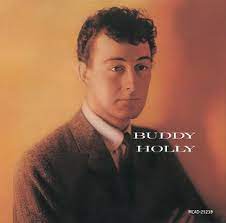
Peggy Sue is a classic rock and roll song recorded by Buddy Holly and his band, the Crickets, in 1957. Written by Holly, Jerry Allison, and Norman Petty, it was named after Allison's girlfriend.
Inspired by Eddie Cochran's song "Cindy Lou," Holly and Allison decided to write their own version about Peggy Sue. Recorded in Clovis, New Mexico, the song only took two takes to complete.
Released on September 20, 1957, it quickly became a hit, reaching number three on the Billboard Top 100 chart. Known for its catchy melody and simple lyrics, "Peggy Sue" helped establish Buddy Holly as a major figure in early rock and roll.
Holly
later wrote a sequel called "Peggy Sue Got Married," featured in the
1986 film of the same name.
This one has a
steady down up down up down up all the way through the song in standard
tuning with a few rhythm chops. The chords are A, D, E and an F.
Chords & Lyrics
Jump To Top
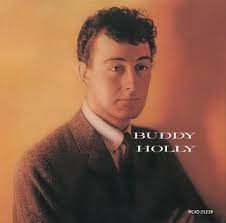
Rave On also hails from the "Buddy Holly" album of 1958 and the song was released as a single, peaking at #12 in Canada, #37 in the US and #5 in the UK. The title for the song came from a Carl Perkins song Dixie Fried which used the lyrics Rave On.
Sonny West, the writer of the song, also recorded a version a few months before Buddy recorded it. On the 2004 best 500 songs of all time from Rolling Stone, the song ranked #154.
Artists who have covered this song through the years include, Joe Meek, John Mellencamp, The Real Kids, Half Japanese, Nitty Gritty Dirt Band, Steeleye Span, M. Ward, Denny Laine, Julian Casablancas and Cliff Richard.
Play this in standard tuning with the chords G, G7, C and D with a down up down up and repeat rhythm pattern with a few chops in the chorus. A bit of picking blended into the rhythm in this one.
Chords & Lyrics
Jump To Top Of Best Of Buddy Holly Songs
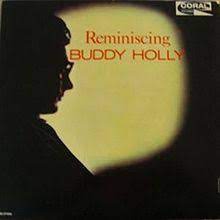
Reminiscing is a song written by King Curtis and recorded by Buddy Holly in 1958, but it wasn't released until 1963, five years after Holly's death. It appeared on the posthumous album "Reminiscing," a collection of previously unreleased recordings and demos.
Recorded at Decca Records studios in New York City, the song features Holly on vocals and guitar, with backing vocals by The Picks and additional instrumentation by studio musicians. The lyrics are nostalgic and romantic, expressing longing for past times.
Despite its delayed release, "Reminiscing" has become a beloved song among Holly's fans and has been covered by artists like The Everly Brothers and Linda Ronstadt. It reached #17 in the UK, making it a great starting point for learning to strum Buddy Holly's music.
I play this in Drop D Tuning and a
capo 2nd if the original key but capos are always optional. You can
play all down strokes or use a down up down up and repeat rhythm
pattern. A, D and G with some lead will get you through this lesson.
Jump To Top
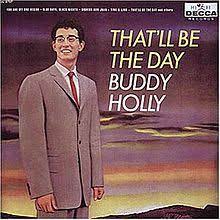
Rockin' Around With Ollie Vee was written and recorded by Buddy Holly in 1956 and released as a single in 1957 from his album "That'll Be The Day." Produced by Norman Petty, the song features Holly on vocals and guitar, backed by the Crickets.
With a classic rockabilly feel, it has a driving beat and catchy guitar riff. The lyrics tell of the narrator enjoying time with his friend Ollie Vee.
Though it didn't chart on the Billboard Hot 100, it's loved by fans and showcases Holly's early rock and roll style. While Holly went on to record many more successful songs, "Rockin' Around With Ollie Vee" remains a key part of his legacy as a rockabilly pioneer. It's a great song to explore Buddy Holly's vintage guitar techniques.
Played in standard tuning with the
chords A, A7, D, Cdim and an E will work here. Lead work in this one
playing a steady down up down up rhythm pattern.
Jump To Top Of Best Of Buddy Holly Songs
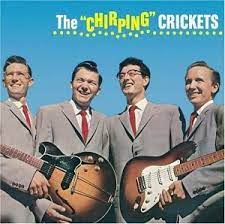
Tell Me How can be found on Buddy Holly's first studio album "The "Chirping" Crickets" which was released in 1957. The song was written by Buddy Holly and did not chart on the US Billboard Hot 100.
The song is a love ballad in which the singer asks his love interest to tell him how he can make her love him, and promises to do whatever it takes to make her happy.
There was no official music video created for this song.
This one has the four chords A, D, E and a Gb in standard tuning. The rhythm pattern is a
down up down up and repeat with some down-strokes and a few picking riffs blended in for good measure.
Jump To Top
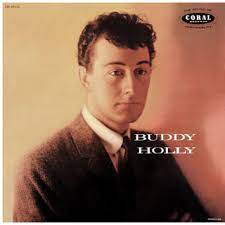
Think It Over is a song on Buddy Holly's second studio album "Buddy Holly" which was released in 1958.
The track was written by Buddy Holly and Norman Petty and reached number 27 on the US Billboard Hot 100 chart in 1958.
The song is about a man pleading with his lover to give their relationship a second chance after an argument, and assuring her that he still loves her.
There was no official music video created for this song but it's one of those rare Buddy Holly singles on guitar that has a walking bass component.
Use a down up down up with walking bass rhythm pattern here in standard tuning but no lead. The chords required are G, G7, C, or C7 and D7.
Jump To Top Of Best Of Buddy Holly Songs
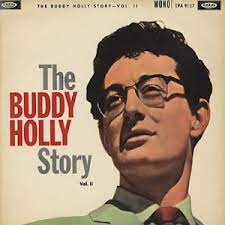
True Love Ways was written by Buddy Holly and his wife, Maria Elena Holly, in 1958 as a declaration of their deep love and commitment.
Recorded with the Dick Jacobs Orchestra four months before Holly's tragic death, it wasn't released as a single until May 1960 in the UK, reaching #25 there. It didn't chart in the US until its release a month later, and in 1988, it peaked at #65 in the UK. Holly recorded the song in his New York City apartment, capturing the raw essence of his talent and the moment's intimacy.
It's featured on the album "The Buddy Holly Story Vol 2." Peter & Gordon's 1965 version reached #2 in the UK and #14 in the US, while Cliff Richard's 1983 rendition also hit the top 10.
Country
star Mickey Gilley had a #1 hit with it on the US country charts in
1980. Mrs. Holly revealed that Buddy wrote the song as a wedding gift
for her. The melody is reminiscent of a gospel song called "I'll Be All
Right," played at Holly's funeral. You can hear similarities between the
two melodies on YouTube by searching "I'll Be All Right gospel song."
The rhythm pattern here is
down down down up down down and repeat with a capo 3rd fret and some lead required. The chords here are
G, Bm, C, Em, D, Am7, Cm, Adim, D#, F, A# and D7.
Chords & Lyrics
Jump To Top
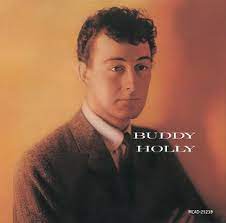
Words Of Love was written by Buddy Holly and released in 1957, but it didn't chart initially. It's featured on the album "Buddy Holly," where Holly sang harmony with himself.
In 1993, a compilation album also titled "Words Of Love" reached #1. The Diamonds did a doo-wop version, scoring a #13 hit in the summer of 1957. This marked Holly's first hit song as a writer.
The Beatles covered it too, with George Harrison and John Lennon singing it between 1958 and 1962, but their official recording had Lennon and McCartney on vocals, done in just two takes.
A live BBC radio album called "On Air Live At The BBC Vol 2" features The Beatles performing it. Paul McCartney covered it acoustically in 1985, and there are other covers by artists like Jessica Lee Mayfield, Pat DiNizio, and Patti Smith, showcasing its enduring popularity.
Three chords here and they are G, C and D with a capo on the 2nd fret using a root down up root up down up in a rake pattern for rhythm. There are a few riffs in here as well.
Jump To Top Of Best Of Buddy Holly Songs
Thank you for exploring my Buddy Holly acoustic guitar lessons page one of two. I hope you’ve enjoyed learning songs like "Blue Days Black Nights," "Fool's Paradise," "Listen to Me," and the other songs featured on this page.
Remember, practice is key to mastering these classic tunes. If you want more in-depth guidance, don’t hesitate to check out my full lesson tutorials. Stay tuned for more songs and tips, and keep strumming to the rhythm of Buddy Holly’s unforgettable music. Happy playing!
If you enjoyed this best of Buddy Holly songs page, you might also like ... (click images)
Buddy Holly
Top Hits Of The 50s
